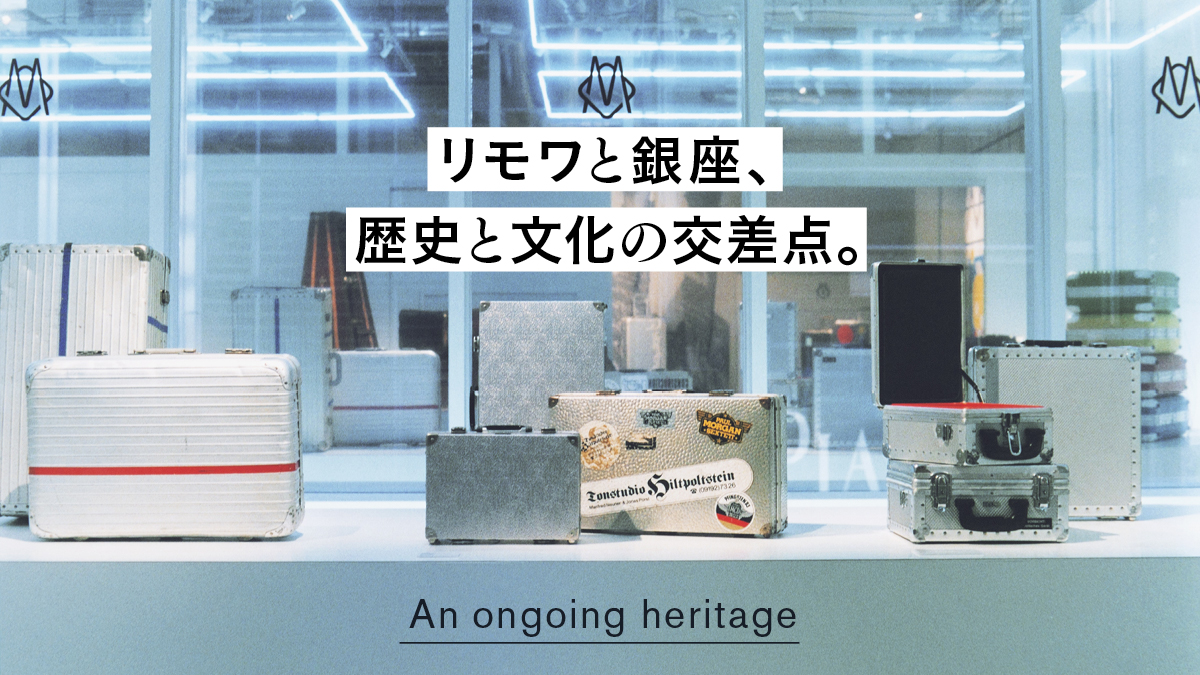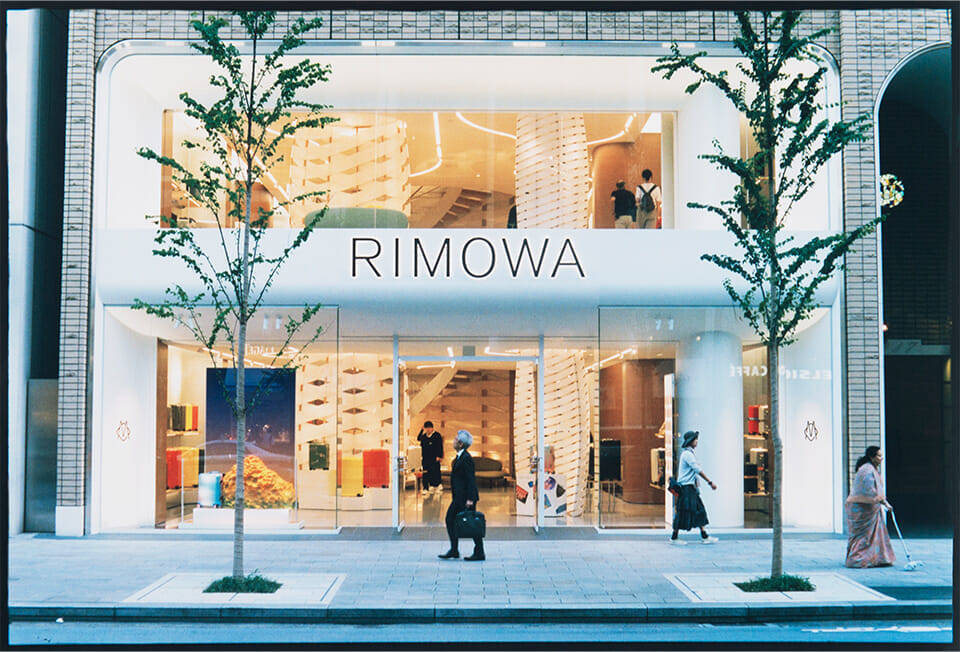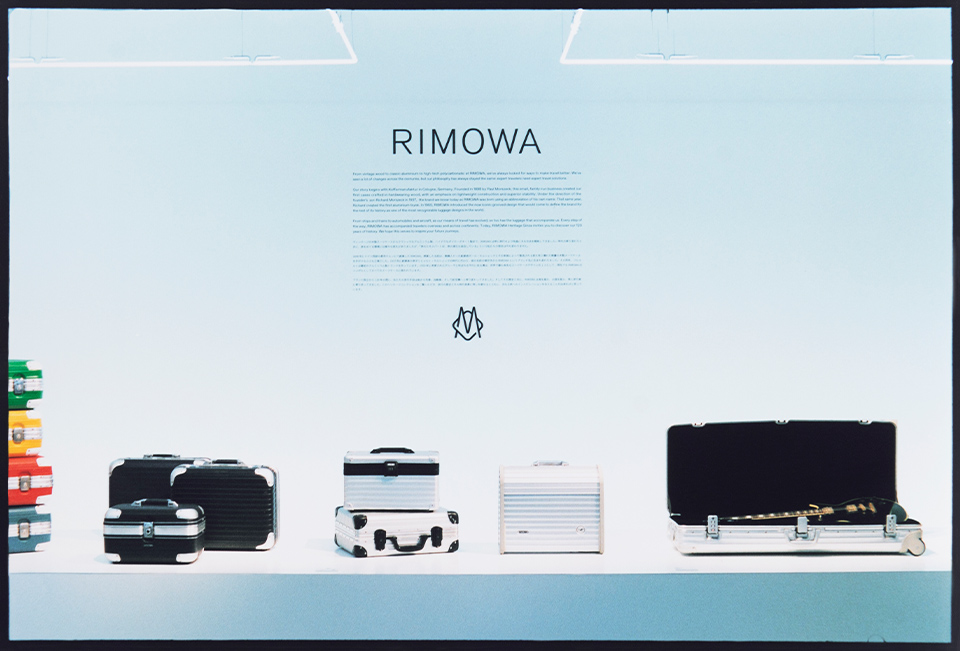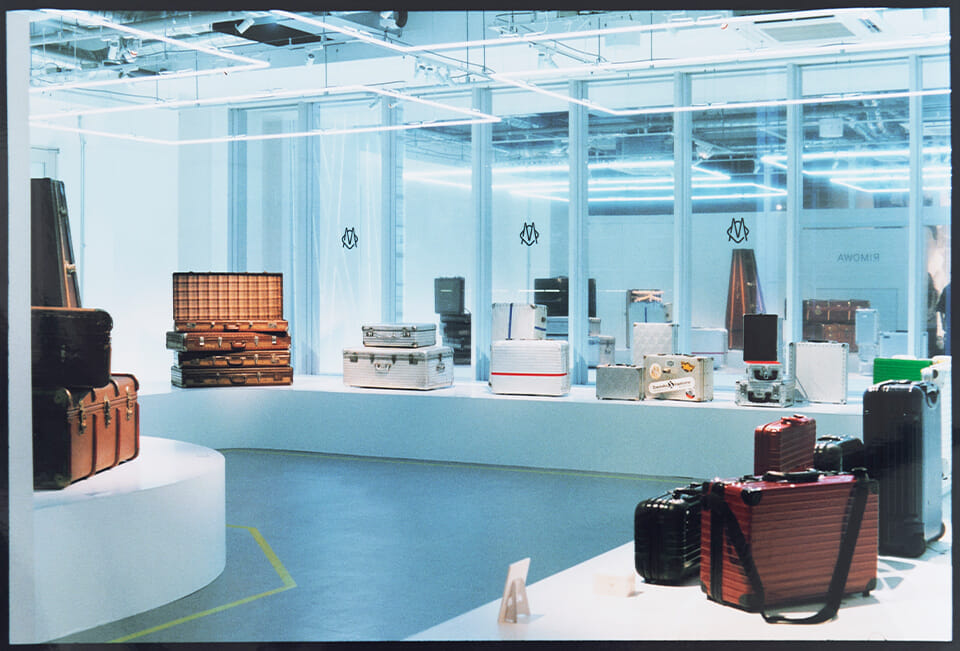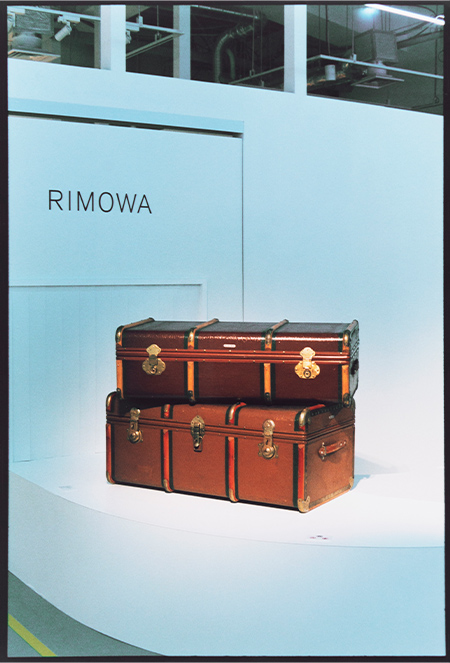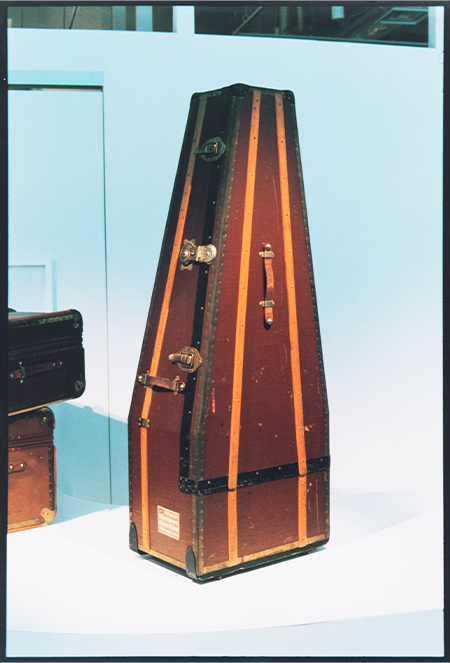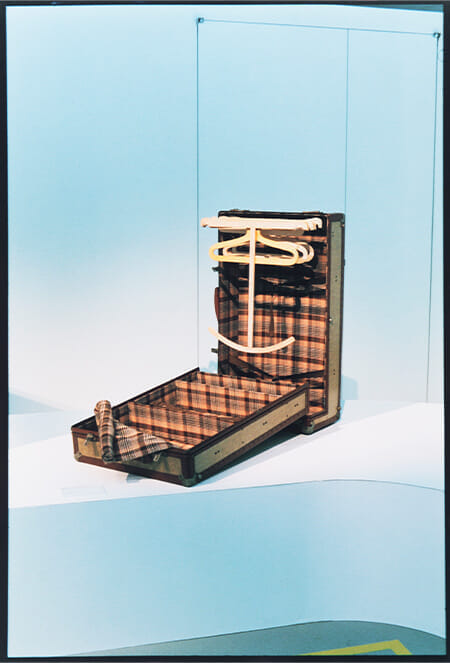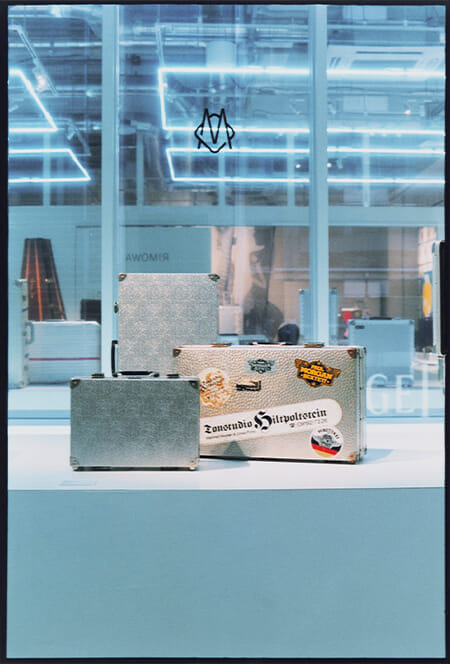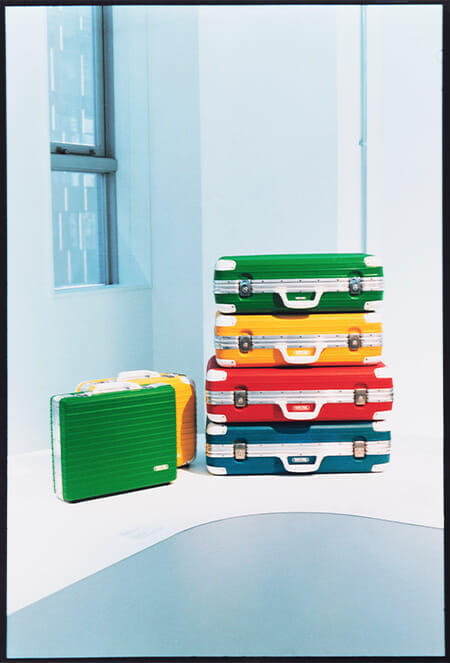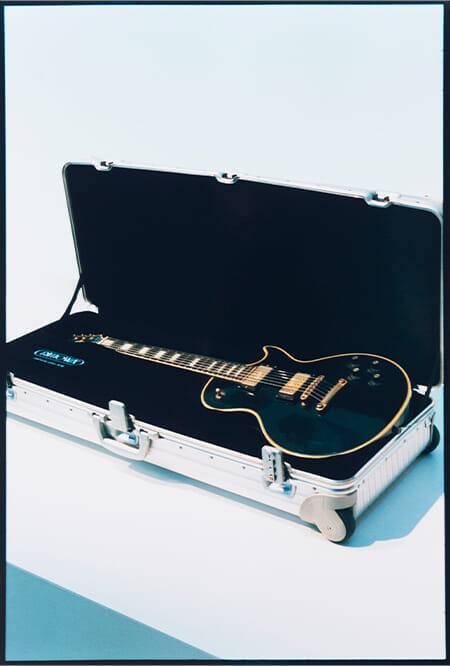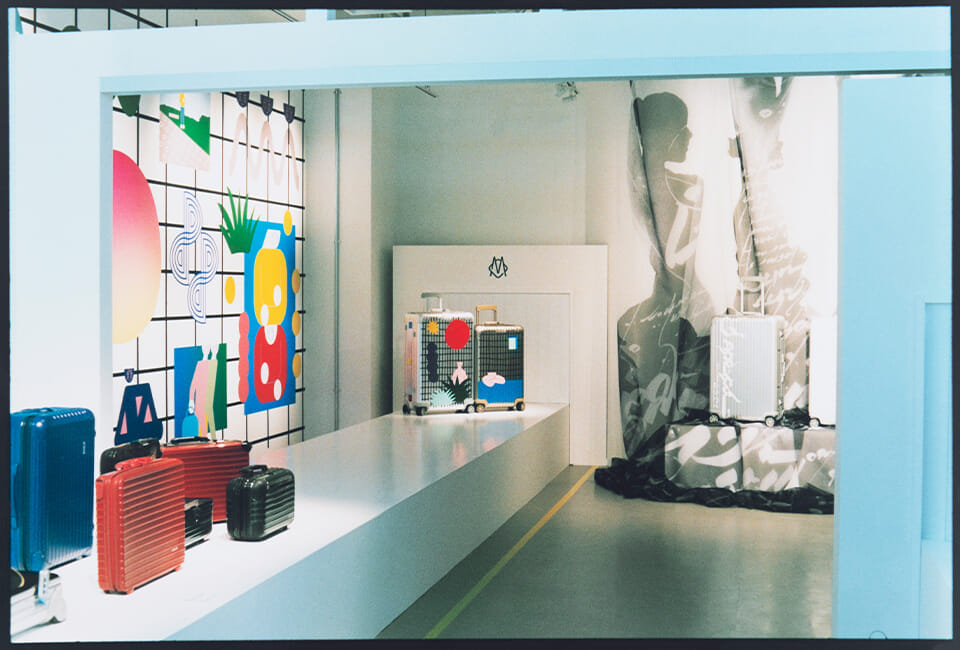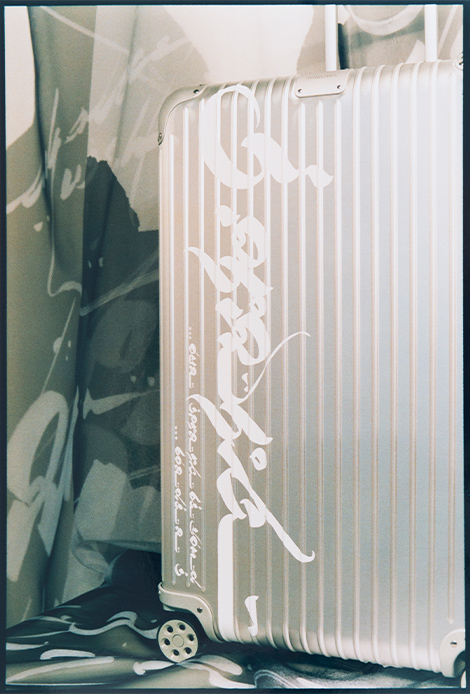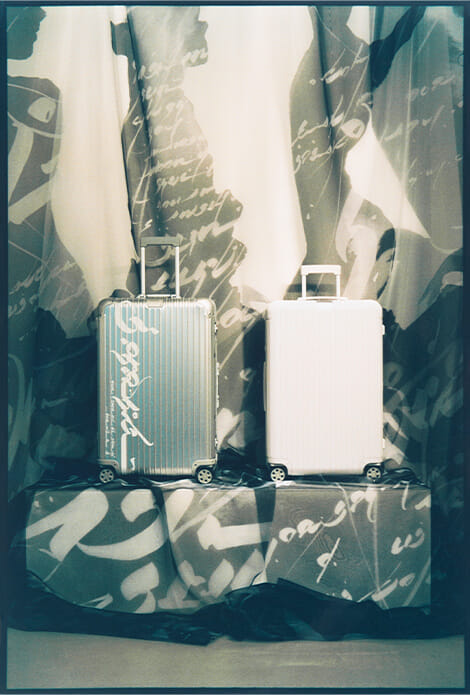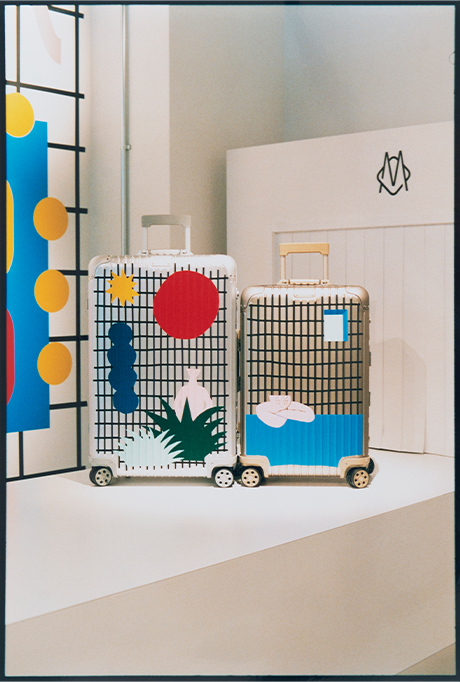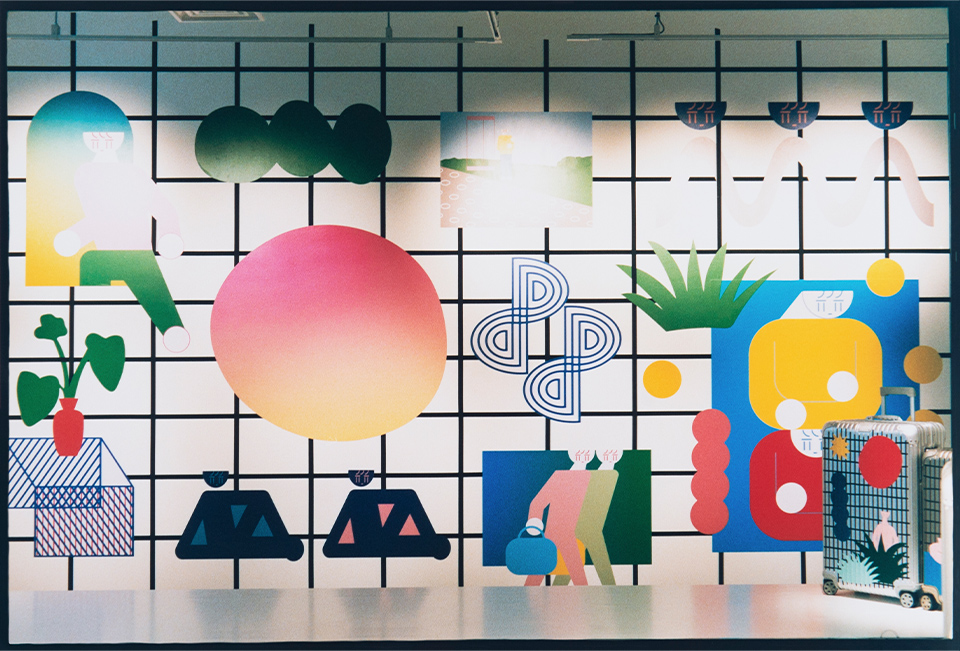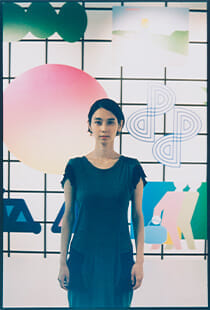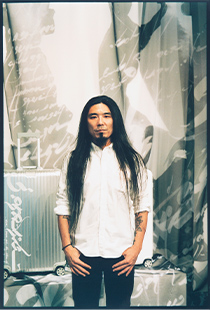The yellow lines on the floor and curved tables are reminiscent of an airport baggage claim, and the way they are presented also reflects the brand's core concept of "travel.
In the space in front of the exhibition, two artists were featured for the unveiling. USUGROW, who specializes in calligraphy and painting, and COLLIU, a model and creative artist, were chosen for the exhibition because of their different genders and styles. The exhibition was curated by Hidenori Matsuoka, editor-in-chief of the free magazine "Hidden Champion," which has delved into various art and street culture.
COLLIU's work is not so much about finishing a painting as it is about expressing it through the use of space. His style of painting flat figures and use of color can be seen as retro or modern. I thought it would be interesting to see her style, which is difficult to identify the historical background, in a historical exhibition such as this one," said Matsuoka. On the other hand, the reason for using Ms. USUGROW is as follows.
He painted calligraphy on the entire surface of the broken floor, which I thought was really cool. He made good use of the large space, and since he also plans his own exhibitions, he has a producer's point of view. I had high expectations that he would make good use of this space for the exhibition at Rimowa. Besides, calligraphy is the artist's original script, and it transcends the concept of national borders. I thought it would be a perfect fit for this brand, whose keyword is "suitcase travel.
And now, before the presentation of the project, Matsuoka-san looks happy in front of the finished work.
I wanted to create an image of a man and a woman, monochrome and colorful. I dared to ask two people with interesting contrasts to create an image like "the exotic feeling of travel," and I think it was the right choice. The finished product honestly exceeded my imagination, and I was very happy about that.
